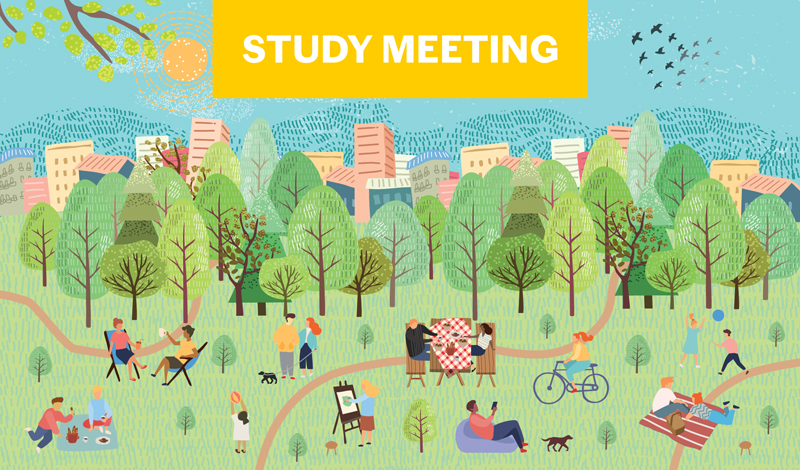The study material below is adapted from The Wisdom for Creating Happiness and Peace by Ikeda Sensei. You can purchase the revised edition of part one at bookstore.sgi-usa.org.
OPTION #1: Bringing Out Our Positive Qualities [6.2]
Chapter 6: The Principle of ‘Cherry, Plum, Peach and Damson’
Gentleness and timidity can be seen as two different expressions of the same underlying nature. When that underlying nature takes the form of gentleness, it’s a strength; when it takes the form of timidity, it can be a weakness. When that underlying nature consistently acts as a weakness, it can become the cause of unhappiness. …
Our basic underlying natures don’t change, but through our Buddhist practice, we can redirect our natures in a positive manner. Nichiren Daishonin says: “When one comes to realize and see that each thing—the cherry, the plum, the peach, the damson—in its own entity, without undergoing any change, possesses the eternally endowed three bodies [of the Buddha]” (The Record of the Orally Transmitted Teachings, p. 200).
Buddhism teaches the way for each of us, just as we are, to attain happiness while bringing out the best of our innate disposition and potential—in the same way that the cherry, plum, peach and damson each manifest their own unique nature.
People with fiery tempers are often also passionate, with a strong sense of right and wrong. By exerting themselves in Buddhist practice, they will no longer lose their tempers about unimportant things, but become people strongly committed to opposing evil and injustice.
Likewise, people who tend to be too agreeable or easily manipulated by others are often very kindhearted and able to get along well with others. Through practicing Buddhism, they can bring out this latter strong side of their natures. Positively transforming ourselves in this way is what we call human revolution. The important thing is how to make that transformation happen.
Basically, the key is to chant Nam-myoho-renge-kyo and continue developing your life. It’s crucial to reflect on yourself and discover your problematic qualities and life tendencies. …
Unless someone points these negative tendencies out to us, we may not be aware of them. That’s where our seniors in faith and fellow members come in. They can draw our attention to them and support us in the effort to overcome them. We also need to chant earnestly to challenge and transform our negative tendencies. …
Refusing to allow our weaknesses to defeat us and triumphing in one activity after another is the way we train and strengthen ourselves; it is the path of human revolution for each of us to win over our negative tendencies. Soka Gakkai activities are the “place of practice” or “training ground” where we develop and strengthen our lives. By dedicating ourselves to the mission of kosen-rufu and continuing to strengthen and improve ourselves, we can also transform our karma.
Suggested Questions:
1) Which part of this material resonated with you?
2) What personal qualities have you transformed for the better through your Buddhist practice?
OPTION #2: The Supreme Path of Benefit Others [7.8]
Chapter 7: Happiness for Both Ourselves and Others
The reality of life is that people usually cannot even help themselves, much less make their own families happy. Many political leaders and celebrities pretend to be caring and altruistic, but how many are actually dedicating their lives to the welfare of others?
Our members in the early days of our movement were virtually all poor. Most had no particular social status or higher education. But they possessed a lofty spirit. They were determined to help everyone they encountered become happy. They burned with a sense of great mission as trailblazers for humanity.
There is no nobler way of life than to be committed to helping others, to empowering them to become happy.
I will never forget the words of one of the members who pioneered the movement for kosen-rufu in Peru: “Other than my blood and my bones, what sustained me in this life was just my wish for the happiness of the people of Peru.” Those were his last words.
Second Soka Gakkai President Josei Toda, said:
You can give food to the hungry and money to those in need, but you cannot distribute those things equally to all who are wanting. There is a limit to material aid. And the recipients may be glad, but they may also become dependent upon you and think they can continue to receive this support without any effort on their part. The greatest offering one can make is the offering of Buddhism. This allows people to gain fresh life force, enabling them to do their work and to become healthy again. This inner strength, like water welling up from the earth, is limitless.
This is, indeed, the supreme path of benefiting others.
Suggested Questions:
1) Which part of this material resonated with you?
2) President Toda says, “The greatest offering one can make is the offering of Buddhism.” What does this mean to you?
You are reading {{ meterCount }} of {{ meterMax }} free premium articles

